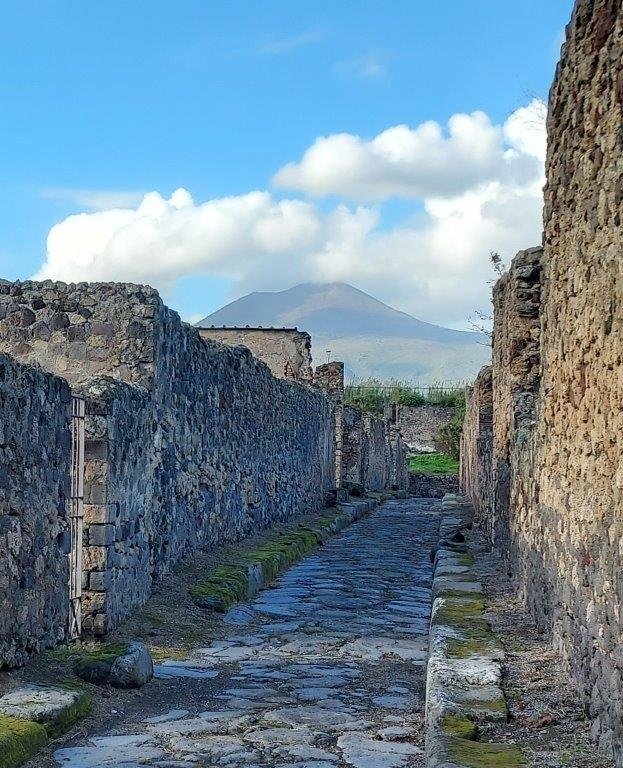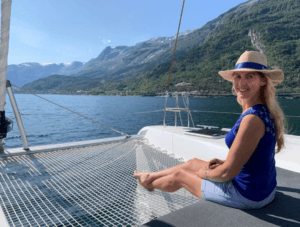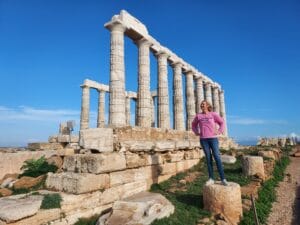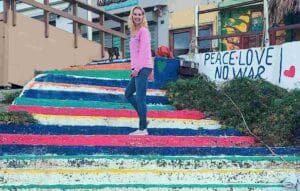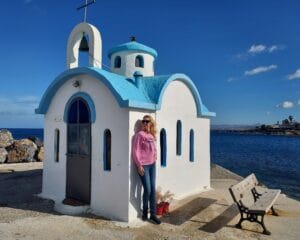When we sailed the Bay of Naples, we also visited Pompeii and Herculaneum. Two cities of the ancient Roman Empire that got destroyed by the eruption of volcano Vesuvius. I’ve written sailing in the Bay of Naples and now we like to write an extra blog on our visits of Pompeii and Herculaneum, because it was a special experience and impressive to see the excavations.

Vesuvius
Mount Vesuvius is an still active volcano on the west coast of Italy. The name “Vesuvius” comes from the old language “fesf”, which means smoke. The volcano has a diameter of eight kilometers and is 1281 meters high. When you sail past Vesuvius, it looks peaceful and like a nice mountain in the mountainous landscape of the Bay of Naples. But in the year 79 after Christ, a disaster took place by a big eruption. Since then, Vesuvius has erupted many times since then; the last time was in 1944. Mount Vesuvius is considered one of the most dangerous volcanoes in the world due to the millions of people who live close enough to be affected by an eruption. About 600,000 people live in the actual danger zone, more than any other volcano in the world.

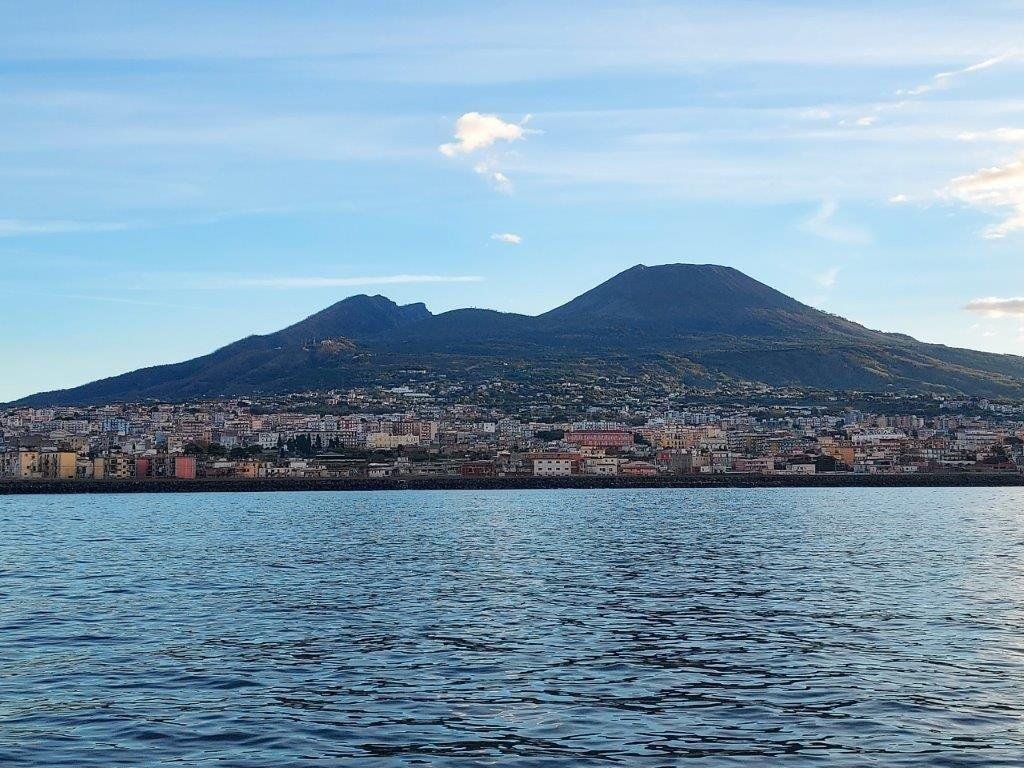
The eruption in the year 79 AC
Seventeen years before the eruption of Vesuvius, in 62 AD, a major earthquake occurred around the mountain. This earthquake caused a lot of damage in the places on the Bay of Naples and the city of Pompeii in particular suffered from the earthquake. Much of the damage the city had suffered had not yet been repaired in 79. The inhabitants of the region were accustomed to the earthquakes that occurred. From October 20 in the year 79, earthquakes began and increased in intensity and number towards the twenty-fourth, the day of the eruption.
In this map you can see the area that was effected by the eruption. It is not well known that in addition to Pompeii, Herculaneum and 2 other cities, Oplontis and Stabia, were also wiped out.

The initial eruptions belch large amounts of ash, dust and rocks during the first four to eight hours. The amounts of stones and ash can be enormous and form a layer several meters thick. Buildings are destroyed as a result.
In the second phase of the eruption there is the red-hot pyroclastic wave that flows down the flanks of Vesuvius.
Herculaneum
We first went to ‘Parco Archeologico di Ercolano’, the Italian name of the current city is Eroclano and they also named the ancient city Herculaneum this way. We took our e-bikes and cycled in 9 minutes from the harbor to the excavations. We are often the only cyclists to be visitors, but Italians are very relaxed and you can always park your e-bikes at the entrance.
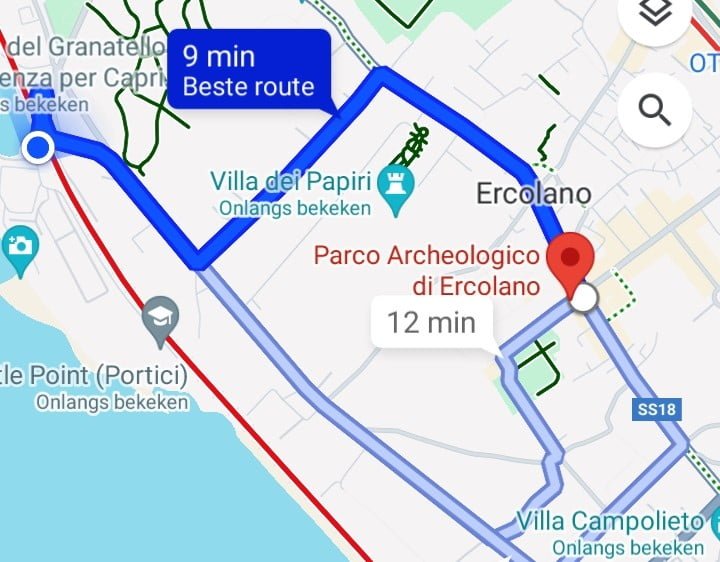
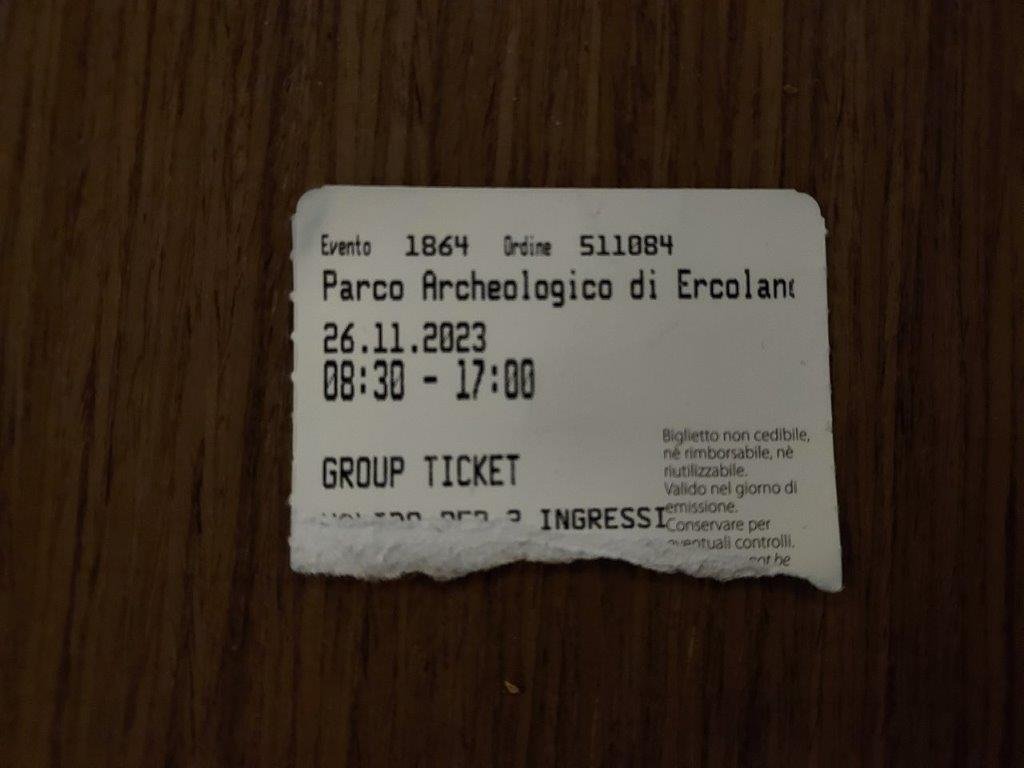
The entrance was quite impressive! It was a gate and then you walked up a bridge, because what we now realized: when the city was hit by the eruption, it disappeared under 20 meters think layer of ash, mud, dust and rock. Because the promised help from Emperor Titus failed to materialize, the cities fell into oblivion. Next generations start building a new city at the rim of this land that was fertile and full of trees. So at the entrance you are at ‘groundlevel’ of the new city, but look down on the old city. You can actually see the new building build behind the excavations.
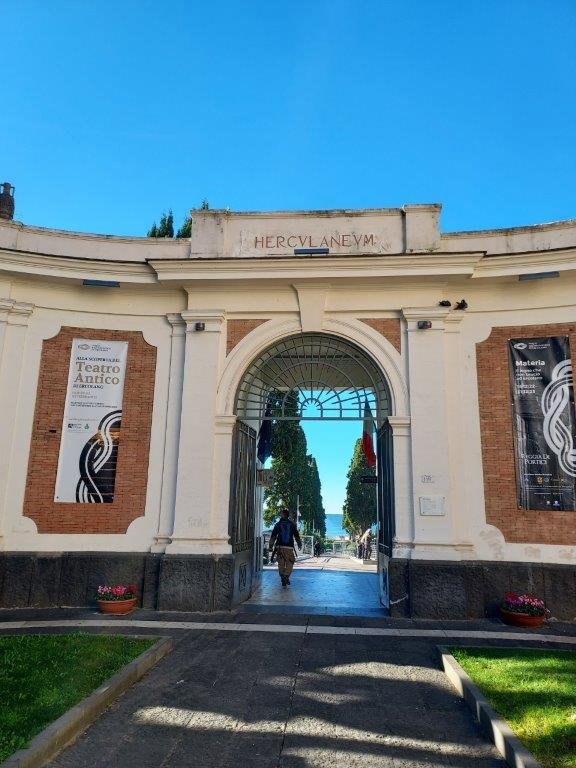

When you walk through the excavations that started in the 18th century, you see that the layer of lava that covered the city also caused the coastline to move further away. For the archaeologists who worked in the cities, the well-preserved status of Herculaneum gave a lot of insight into Roman life during the heyday of the Roman Empire. For instance even bread on the table and wooden frames in the houses where preserved during 2000 years! When you walk around you read stories of the way houses where build in the Roman Empire, about the thermal baths and how the way waterlines and sewerage systems were constructed. Also you read about religious buildings and bars and kind of shops that were there.
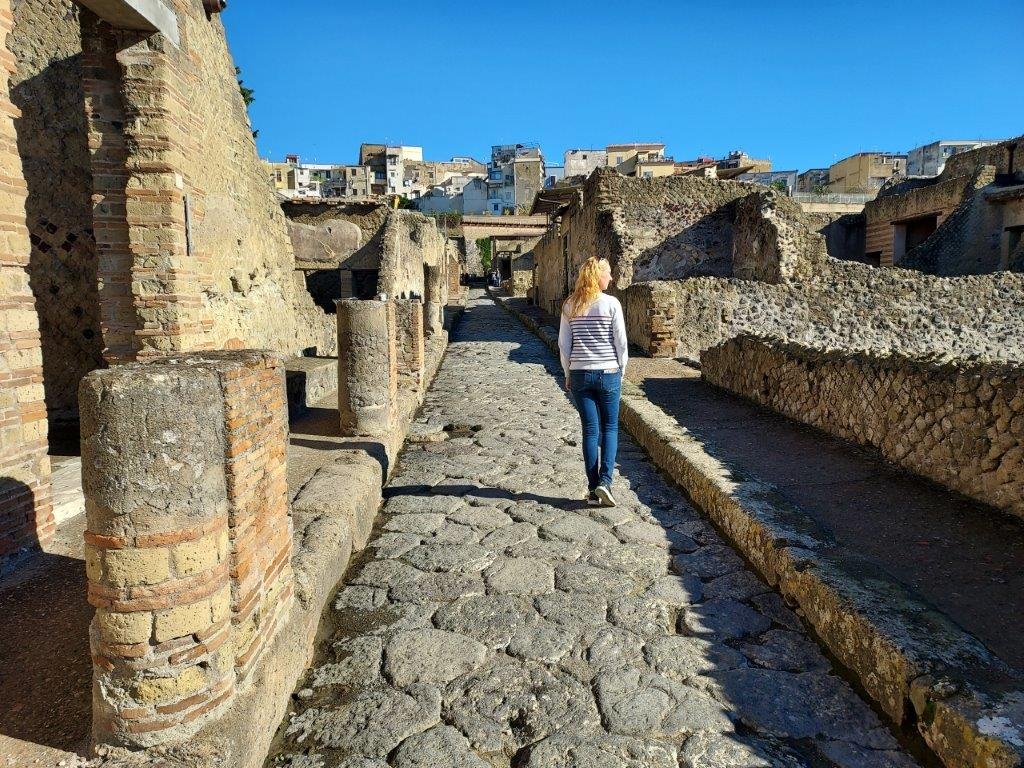

For instance, in this bakery (on the left below) you can still see the grain mills. And in the right picture, you can see a public fountain (in white, in the left corner), because the people of Herculaneum had the right to access of drinking water all the time.

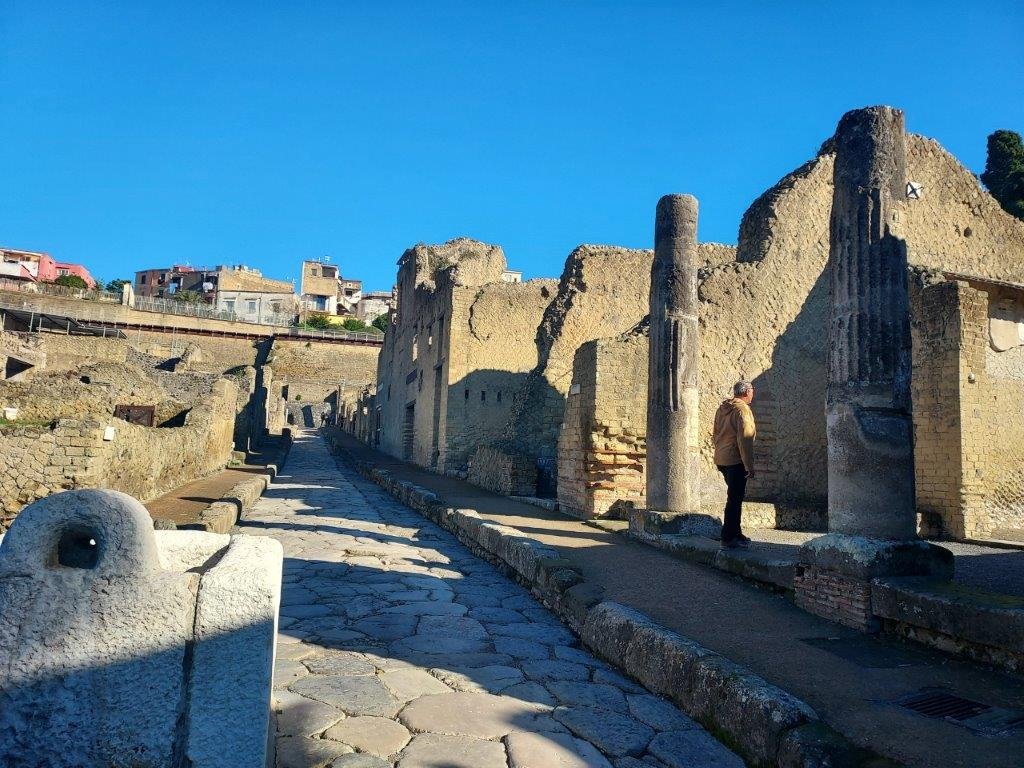
Because inscriptions on the walls were discovered, they could also tell about families who lived in the houses, it was impressive to see that also the original colors of the ‘wall paper’ (mainly fresco’s) had been preserved.

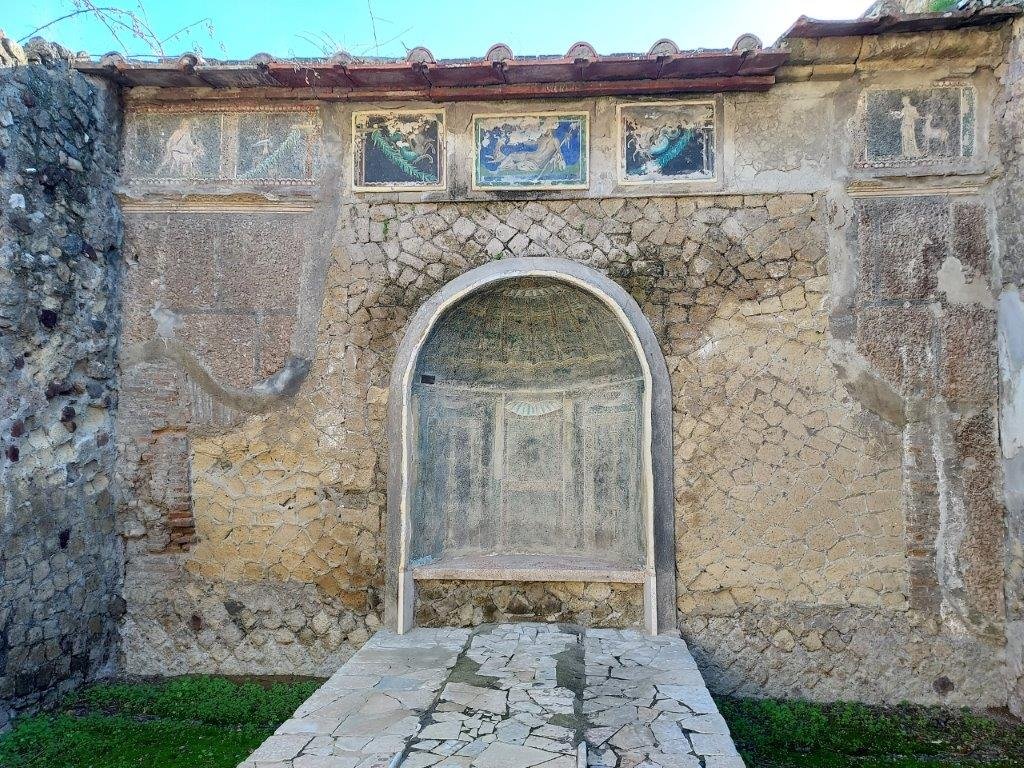
We saw a lot of different places, so refined and tastefully painted, you could really imagine what life was like here. And only about 5 of the 20 hectares of the old city have now been excavated.
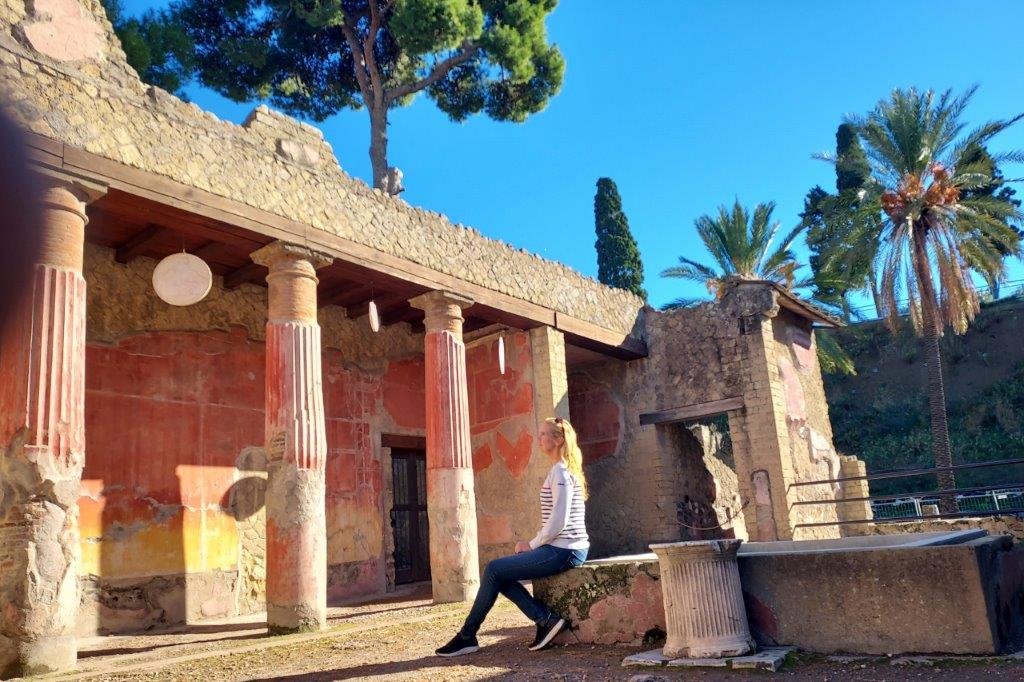
During the eruption, Herculaneum was not hit by the first phase which is the rain of ash and pumice, which hit Pompeii, but 1 day later Herculaneum was hit by the pyroclastic flow. That’s why 90% of the 4000 residents of the city managed to escape in time, because almost no bodies were found in the city. But at 1 place in the city, most bodies were found and that made a big impression on us.
Because at the rim of the old city, faced towards the sea and in that time being close to the water, on the beach were boathouses. The skeletons of more than 300 people were found here in 1982, who apparently did not escape in time. It is believed that these people waited to be picked up by boats, because after waiting a day to protect their possessions, they decided that it was time to leave. But it was too late. As he the pyroclastic flow started, it has been calculated that it took only four minutes to reach the city of Herculaneum, which is seven kilometers from the crater. The layer of mudflow that covered the city was up to 20 m thick and also caused the coastline to move further away.
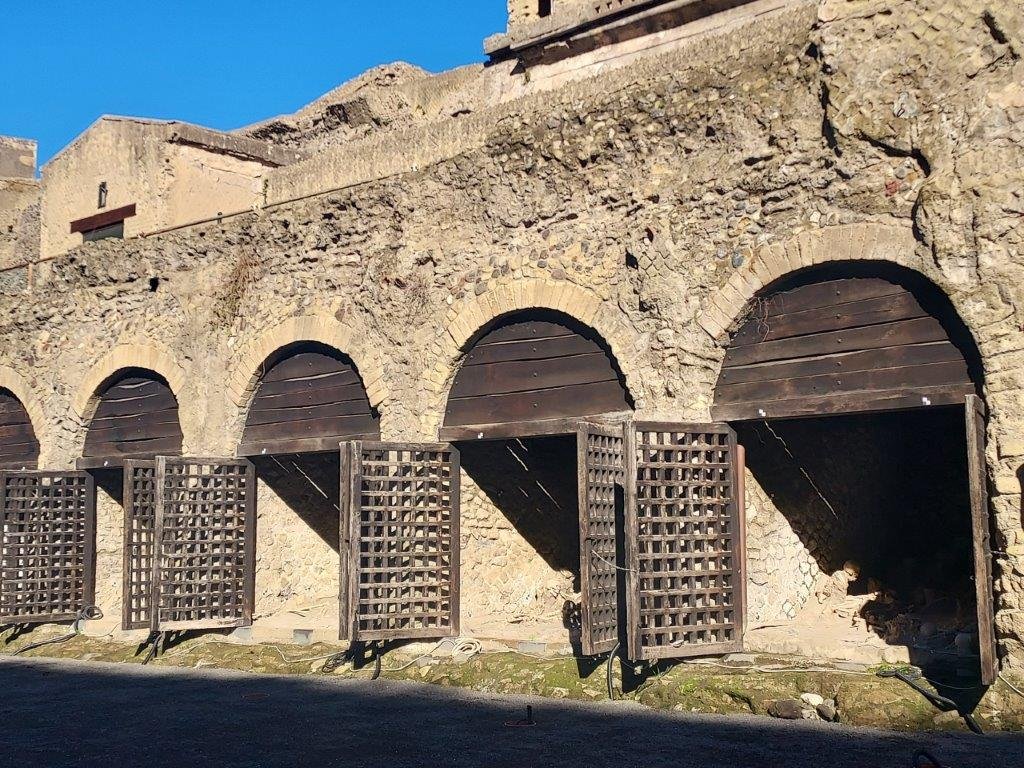
Pompeii
Pompeii was a much larger city than Herculaneum, so the entrance was totally different: not 1 gate, but 4 gates and a much larger site to explore.
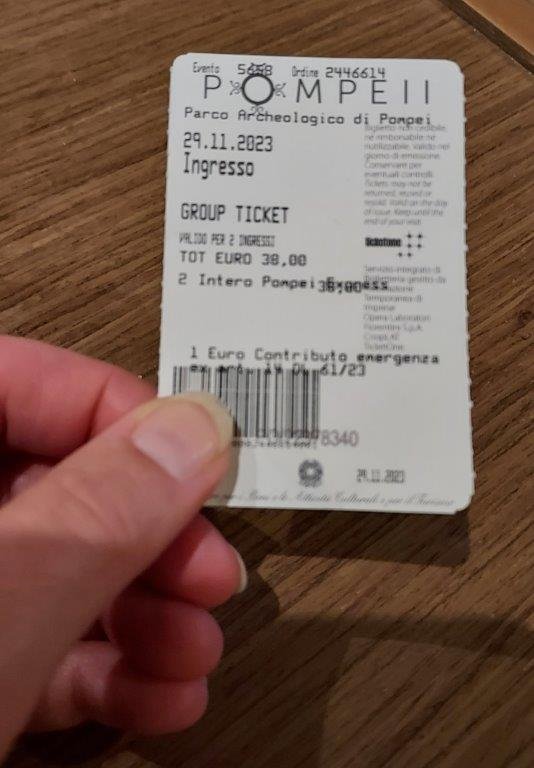

Sadly, of the 20.000 inhabitants during that time, many died during the eruption. This had to do with the fact that the wind blew the initial belch with large amounts of ash, dust and rocks over the city of Pompeii. In total, the eruption of Vesuvius lasted two days. The volcano erupted about 13.00 o’clock on October 24. Already in the morning the mountain had started smoking.
Because Pompeii was ‘only’ covered with 4 meters of mud, rock and ashes, it was found much earlier than Herculaneum and because it was a bigger and richer city, more possessions were found. Remains of Pompeii were first discovered during the construction of the Sarno Canal from 1594 to 1600. Excavations were carried out in 1748 and in 2023 about 60% of Pompeii has now been excavated.
Some luxurious houses are quite well preserved. For instance the House of Vetti of rich merchants. You can see here the atrium formed the central part of this house. A lot of time rainwater was collected here.
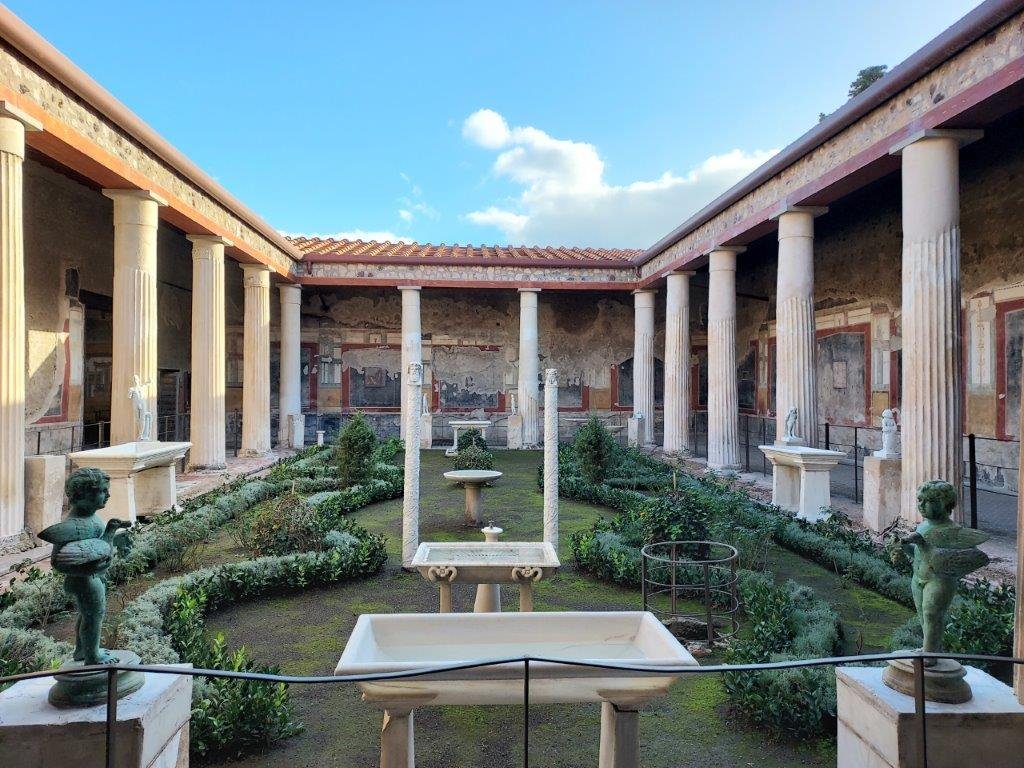
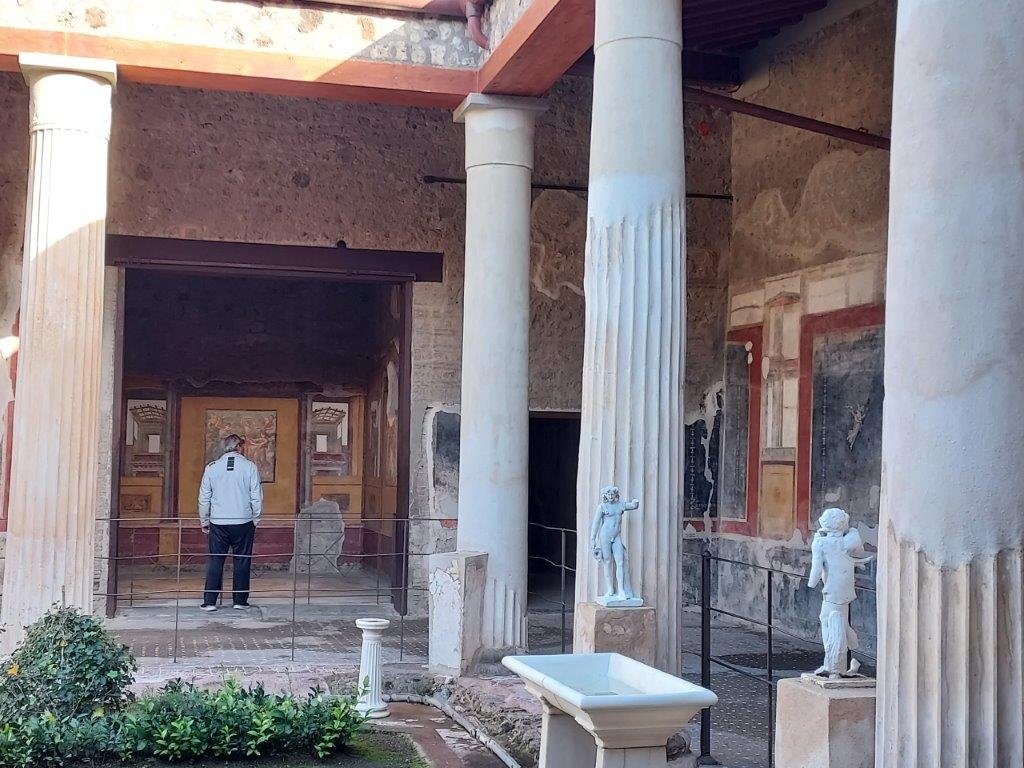
An extension of the atrium was usually an inner garden in the shape of a peristyle. The various living and working areas were located around the atrium and peristyle. The houses usually also had an upper floor, but rarely anything has been preserved. Many houses were connected to a workshop. There was often a shop or bar on the ground floor facing the street. The houses were richly decorated with mosaics on the floors and frescoes on the walls.
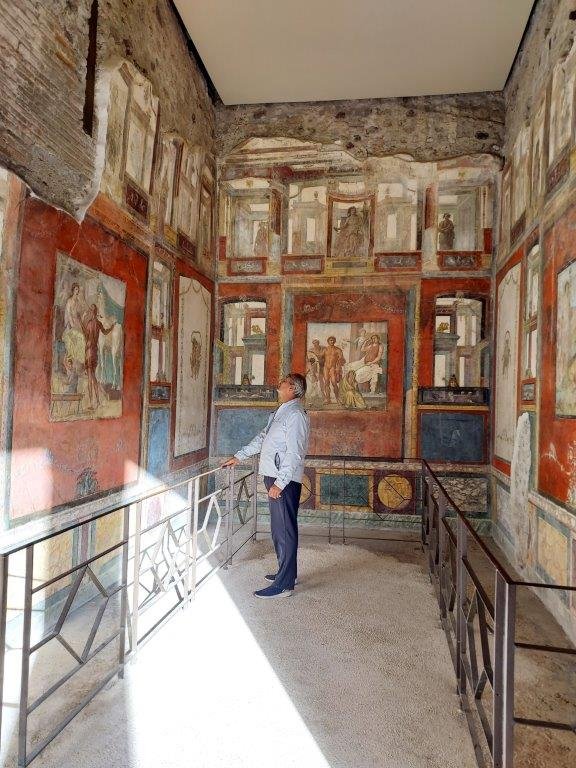
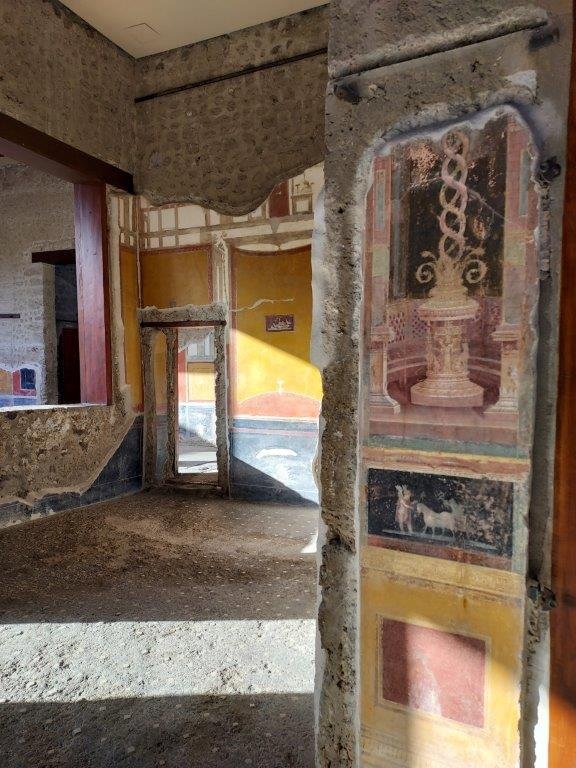
You can also walk along the remains of public buildings, which were mainly religious buildings like temples, amfitheaters or thermal baths. Or on the right picture below, a counter which was found in a shop. The L-shaped, marble-inlaid contained earthenware pots. These were probably used for dry foods such as dry fruits, lentils and beans. Some of these were in fact grocery stores, but often customers could also eat or drink something standing on the street, and sometimes also sit inside, so much like a pub.
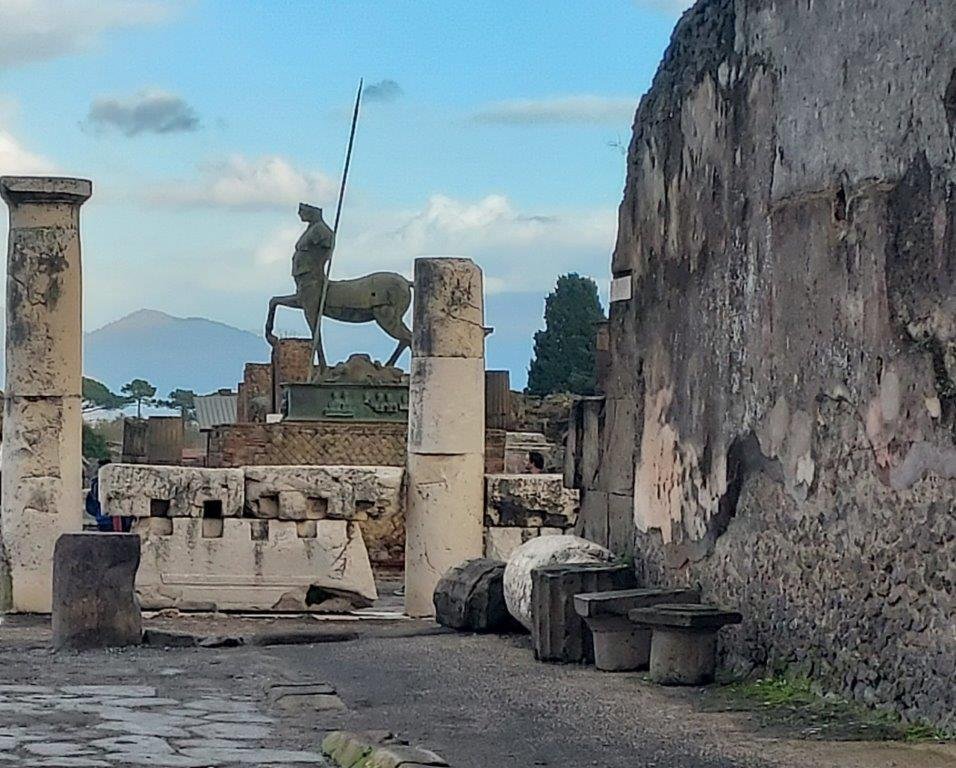

In Pompeii we were most impressed by the preserved frescos and the scale of the site.

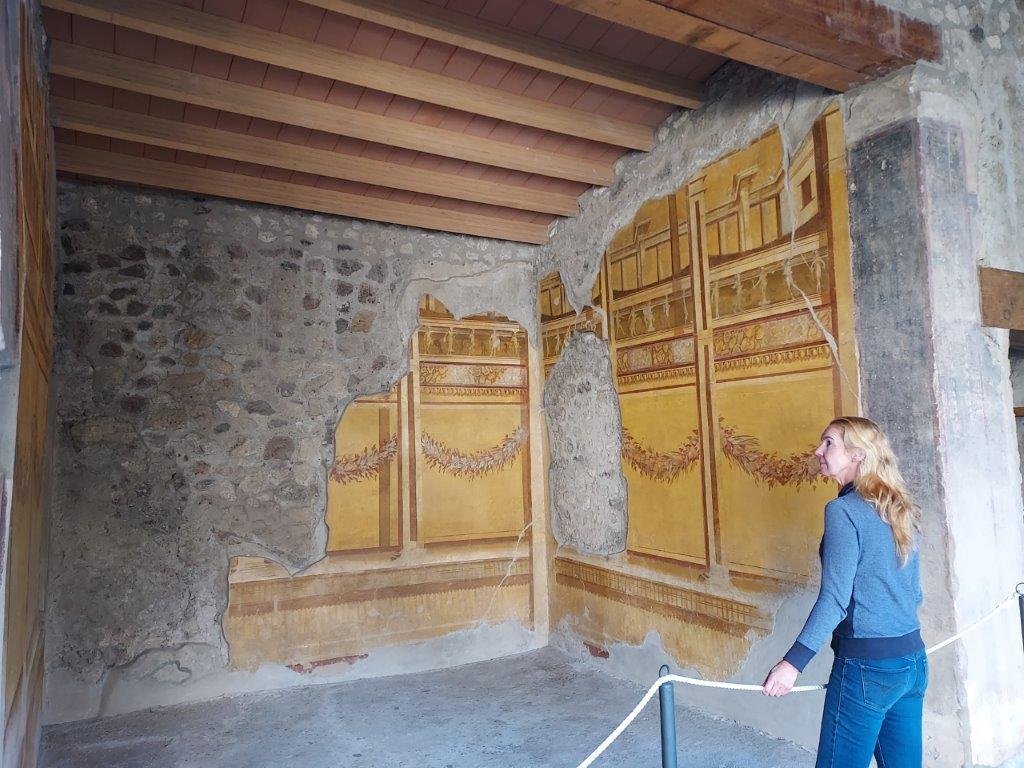
It must be a great joy to have lived here in the sophisticated city.
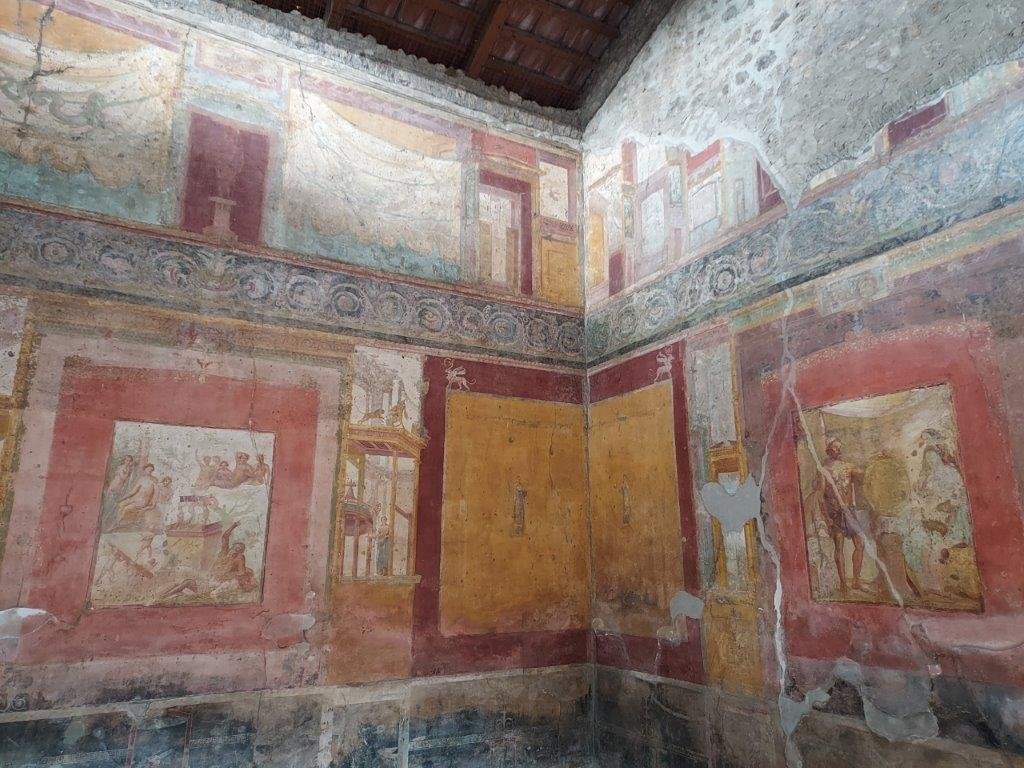
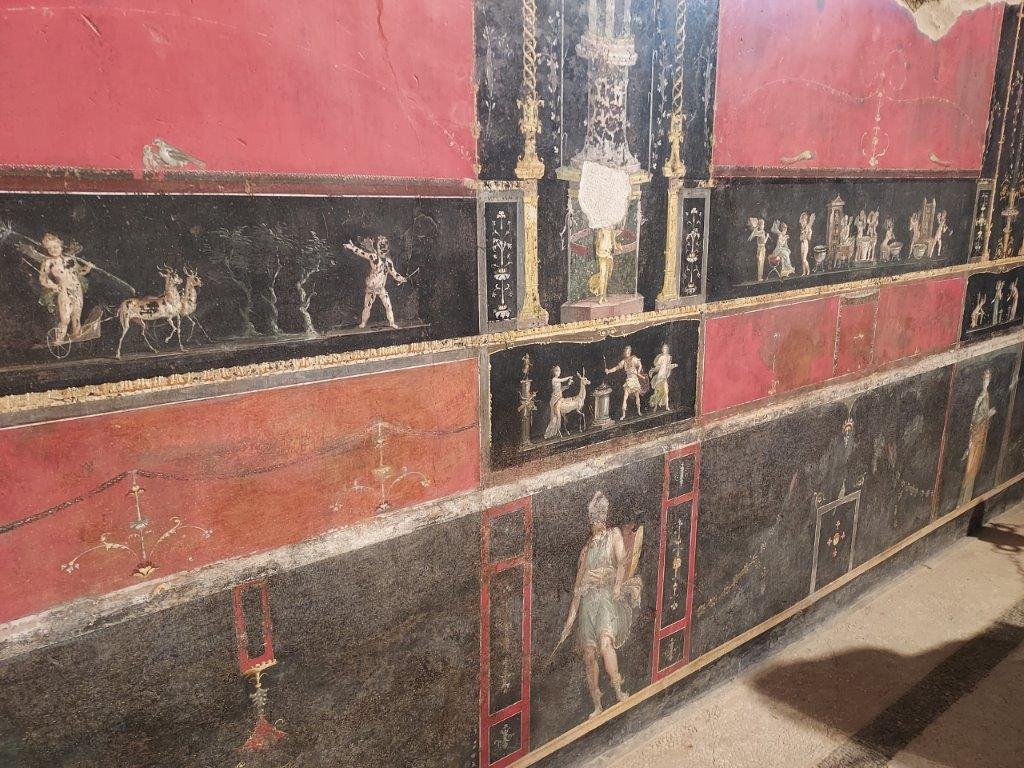
For instance, because a lot of the wastewater ran through the city streets, the sidewalks were placed 30 centimeter higher and to cross the streets you could walk over stones, which also left room for horse and carts to travel on the streets, because their wheels would match the distance between the stones. We could actually see the cart tracks in the stones, close to the pedestrian crossings!

Gilles was especially interested in the distribution of water, because we found the old building of what we could call today ‘regional water authorities’, but was then called Castellum aquae (Water Castle). According to expert calculations these days, about 42 liters of water flowed in per second. It was on the highest point at the rim of the city, where water was collected from the mountains. In the building, water was filtered and distributed via a sliding system in 3 streams: public water, water for thermal baths and water for the houses of the rich people. Those 3 streams led to 3 lead pipelines that ran through the city. But in times of shortage of water, the public stream had priority. So first the stream for the rich people was diverted to the public stream and if there was more water needed, the waterstream of thermal baths was also diverted to the public stream. So 40 fountains on the streets of Pompeii and in public places would always be filled with water. We were very charmed by this way of democratic thinking in the interest of the community.
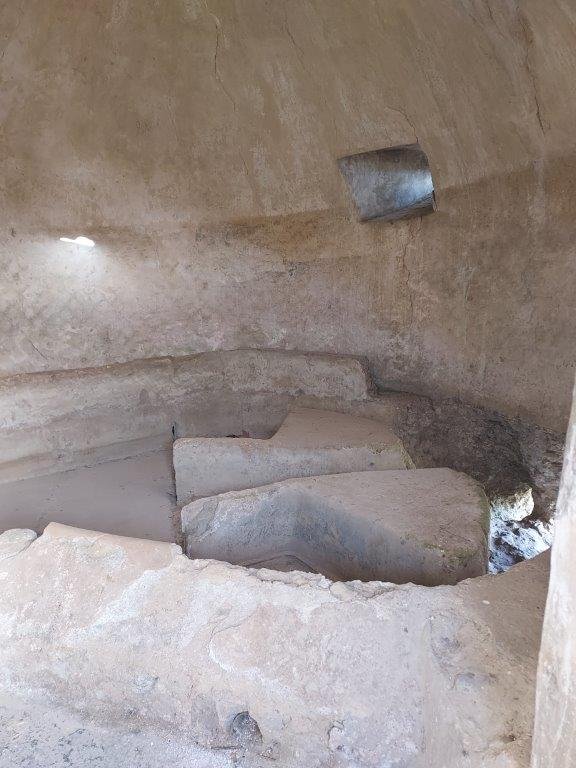
* Next picture below can be shocking *
What also made an impression on us, where the plaster bodies were. Because of the fact that the hottest pyroglastic flow came over Pompeii, the human bodies were preserved airtight in the petrified layer of ash. Cavities remained when human bodies decayed. You then get a kind of mold, and when you fill it with plaster you get the original shape back, with quite a lot of detail. The end result is called a “cast”. What happens is that with the high temperatures or the thick ash cloud, people’s muscles cramped or they literally gasped. It was very quiet in the room with casts, when you walked around….

In all we spend 6 hours in Pompeii, as you can see here below, a picture I took walking in the 2000 year old streets, with mountain Vesuvius in the background. It really gave us a day of being in the ancient Roman Empire. You notice the change so clearly, when you step outside of this ancient city, and cycle back on the streets of modern Pompeii and seeing again modern houses and Italian cars driving around honking.
